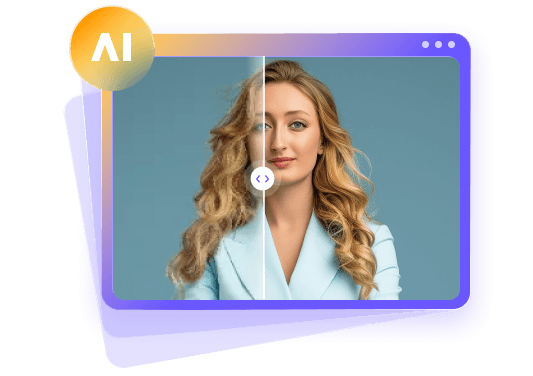AI Slop Explained: Meaning, Examples, and Tips to Prevent It
In recent years, the internet has been flooded with a new term: AI slop. But what exactly does it mean, and why is it becoming such a concern for creators, audiences, and platforms alike? Put simply, AI slop meaning refers to low-quality, mass-produced AI-generated content that often lacks originality, depth, or artistic value. From oddly rendered AI images with too many fingers to generic blog posts stuffed with repetitive phrases, AI slop has become a symbol of what happens when quantity is prioritized over quality. This article will break down what AI slop is, how to understand it properly, and the best ways to avoid producing slop while still leveraging the benefits of AI tools.
Part 1: What Is AI Slop (AI-Generated Slop)?
AI slop is a pejorative term used to describe low-quality, mass-produced AI-generated content-whether text, images, or media-that prioritizes speed and volume over substance and quality. It's similar to calling something "spam": content that feels like digital clutter or "filler content" that doesn't meaningfully serve the user.
Jonathan Gilmore, a philosophy professor, calls such content "incredibly banal" and easy for users to process-precisely because it lacks originality or deeper intent.

AI slop doesn't just appear in art-it shows up everywhere:
- Social media flooded by nonsensical AI images (e.g., bizarre "Shrimp Jesus" memes).
- LinkedIn and other platforms inundated with repetitive, chatty AI post.
- Pinterest and Instagram overwhelmed by repetitive "fall vibes" imagery that looks perfect at a glance but falls apart under scrutiny.
- A decline in Google search quality, where AI slop pushes meaningful human content deeper into search results.
Part 2: How to Properly View AI Slop
1. Recognize AI slop as a byproduct of convenience and volume over craft
It's not inherently evil, but its proliferation is driven by algorithms, platforms, and creators looking to game attention quickly and cheaply.
2. AI slop sets a low bar-but not all AI output is slop
Well-crafted AI content, guided by human creativity, is not slop. Thoughtful, curated use of AI has value. "Real artists don't use AI to produce slop; we use it to produce 'chop'"-meaning reimagined, creatively refined work.
3. Be mindful of unintended harm
AI slop isn't just annoying-it can misinform, erode trust, and overload platforms with empty content, making it harder for genuine voices and creators to shine.
Part 3: Methods to Avoid AI Slop

1. Use High-Quality Prompts & Anti-Slop Prompts
Tell the AI exactly what you want-and what to avoid. Ask for concise, jargon-free output. If the first output is sloppy, ask the model to try again with improvements.
2. Review and Edit Carefully
Don't just copy-paste AI outputs. Human editing is essential to spot generic phrasing, factual inaccuracies, repeated patterns, or bland language. This transforms raw AI output into polished content.
3. Leverage Multiple AI Models
Relying on a single AI model can produce homogeneity. Use a variety of models to diversify output and reduce repetitive or "washed-out" slop.
4. Add Creative Human Touch
Blend AI-generated ideas with personal stories, unique angles, or cultural context. This injects originality and reduces the risk of generic mass content.
5. Vet and Verify Content
Check facts, sources, and visual details. AI often "hallucinates" data or produces odd visuals-like unrealistic hands or scenes that fall apart under scrutiny.
6. Be Selective Where You Publish
Platforms often promote slop because it drives engagement. Favor trusted spaces, filter your search results (e.g., use "site:reddit.com" or trusted domains), or try quality-focused alternatives like DuckDuckGo or Perplexity.ai.
Part 4: [Bonus Tip] Use HitPaw FotorPea to Avoid AI Slop
Here's a smart, proactive way to elevate your AI-generated visuals and minimize the risk of AI slop: try HitPaw FotorPea-a cutting-edge tool built for producing high-quality AI images with precision and ease.
Why HitPaw FotorPea Works Against AI Slop:
- Refined Control: Offers granular settings to fine-tune artistic style, composition, and realism, helping you avoid hallucinatory or off-model artifacts.
- High-Fidelity Visuals: Outputs that look polished and intentional-no washed-out filters or bizarre distortions.
- Efficiency Without Compromise: Streamlines your workflow without falling into the trap of "fast but sloppy."
Tips for Using HitPaw FotorPea Effectively:
- Start with a strong, clear prompt-define style, mood, and quality expectations.
- Adjust the advanced settings to refine lighting, detail, anatomy, or color accuracy.
- Run multiple variations, then select and tweak the best, rather than accepting the first result.
- Overlay or edit the image using human judgment-fine-tune composition, correct mistakes, or inject creativity.
Final Thoughts
AI slop represents a growing problem in the digital age: content generated at scale but lacking soul, depth, or authenticity. Yet, it's not an unavoidable fate. When approached thoughtfully-via strong prompts, careful editing, model diversity, fact-checking, and selective publishing-you can create AI-supported content that feels alive, original, and useful.
And if you're creating AI art, tools like HitPaw FotorPea empower you to avoid slop entirely, helping you maintain high standards while maximizing productivity.
Leave a Comment
Create your review for HitPaw articles









